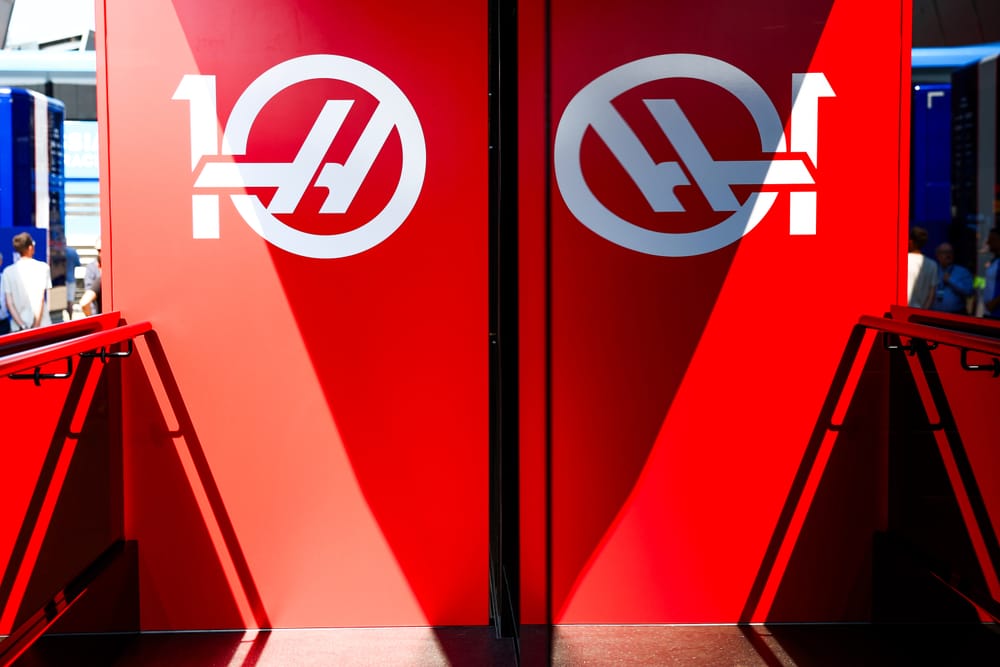Formula 1 motorhomes may at best seem tangential to the serious business of racing on track, or at worst a manifestation of paddock excess.
In reality, they are an essential asset during the European season and, ever since first joining the grand prix grid in 2016, Haas's hospitality facility has been totemic of its limitations. But not anymore.
The new Haas motorhome is making its first appearance at Imola this weekend, with the transformation akin to replacing a lean-to shed with a townhouse. Dark and imposing from the outside, clad in Haas's black-and-red colours, the two-floor structure is spacious and bright on the inside. It's both a statement of Gene Haas's intent and symbol of the team's evolution.
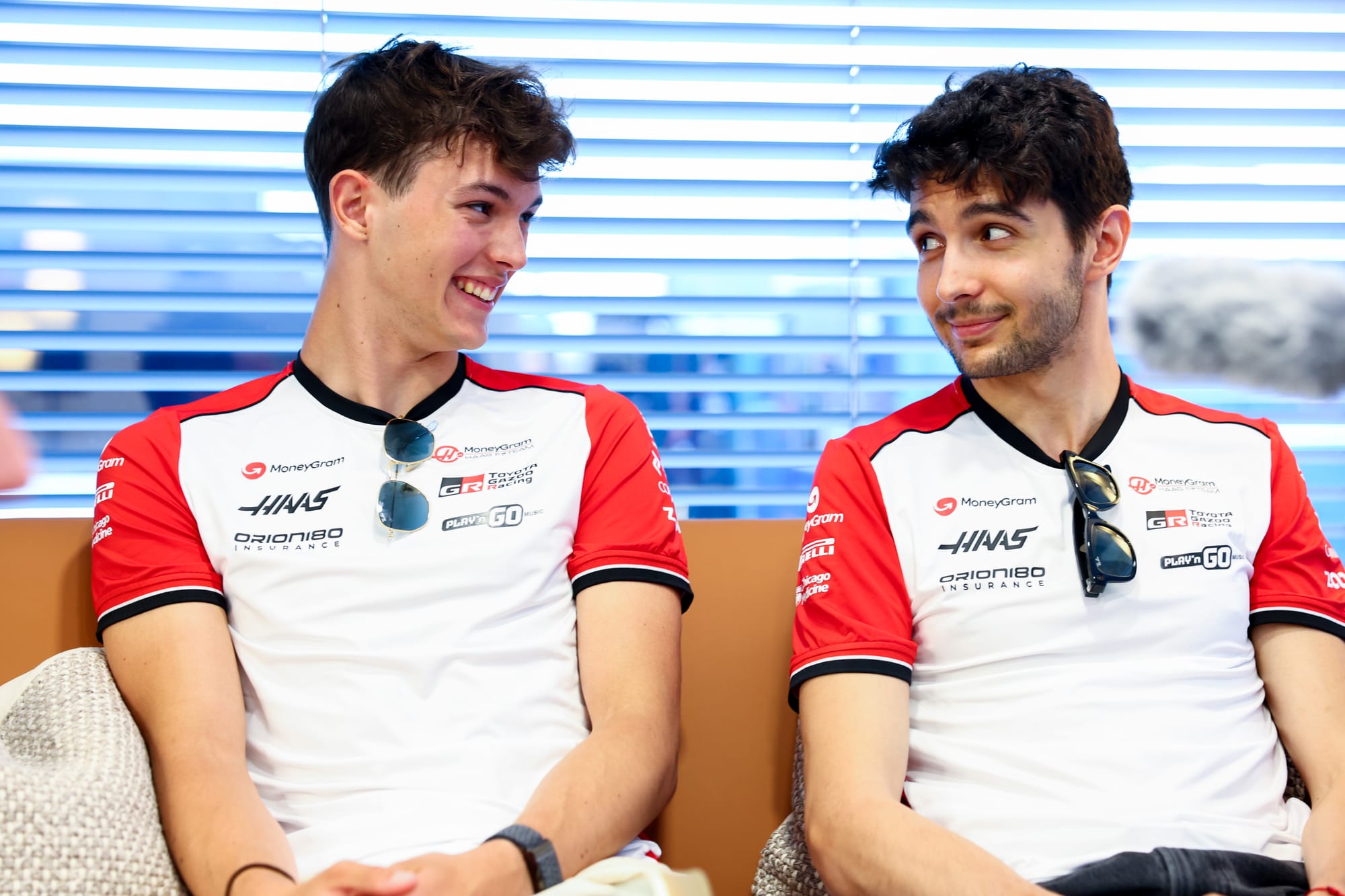
For proof of how big a step it is, just ask Esteban Ocon. While The Race takes a tour, he breaks away from signing caps to enthuse about being allowed to customise elements of his driver room on the ground floor.
Previously, both driver rooms were in one of the Haas trucks and shared a bathroom, but now they have the perfect, personalised environment to prepare. From so demanding a breed as the F1 driver, unprompted positive feedback is the gold standard of endorsements.
The new motorhome enhances the team's ability to attract, entertain and retain partners and therefore sponsorship income. In its early days, the motorhome was solely the trackside team's domain but as more partners came on board in later years, it became more of a shared space. However, pleasant as it was, it really wasn't fit for purpose. Compared to its rivals', Haas' old set-up (pictured below) looked all-too second division.
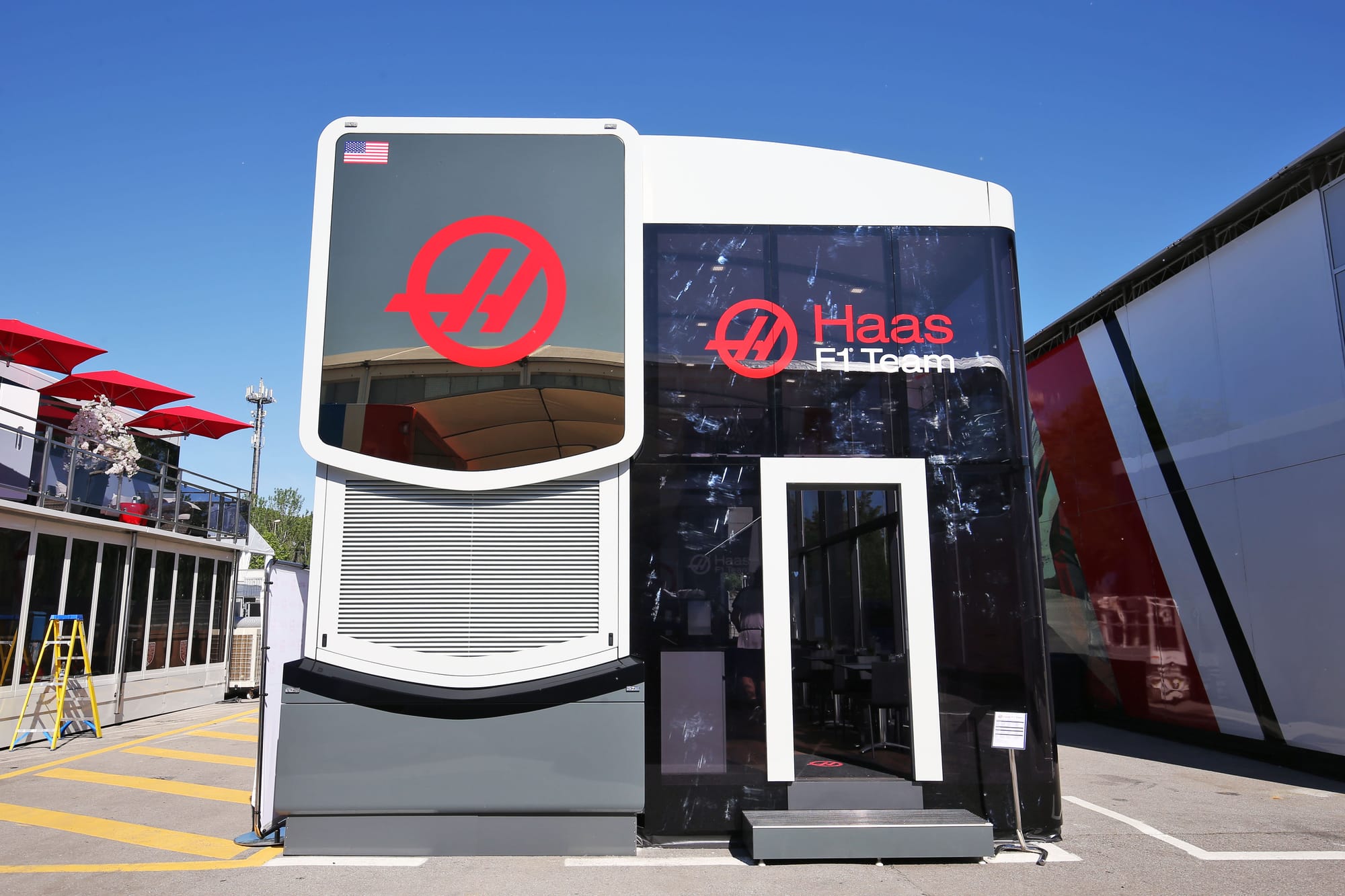
"That was one of our problems," Haas director of marketing Mark Morrell tells The Race. "If I had prospects at Silverstone, for instance, where you can see the whole paddock, it's easy to look like the small team versus everyone else.
"Nowadays, the competitiveness on track is matched off track, where often we will be competing against three or four different teams for those sponsorship pitches.
"F1 is like no other. If you want to sponsor Manchester United, you go to them, they host you and it's great. If you want to sponsor a Formula 1 team, say McLaren will host you and you'll go and speak to three other teams on McLaren's [guest] passes, or whatever it might be.
"That was always something that we were trying to fight against, the perception of 'they're a lesser team' or 'they can't offer what the others can'. This solves that problem."
This limitation has long been painfully obvious and was a bone of contention for previous team principal Guenther Steiner and owner Gene Haas. While there was discussion about the possibility of a new motorhome towards the end of Steiner's tenure, a project Morrell describes as "another key indicator of Gene's commitment to the team" didn't start properly until January last year.
The result is impressive. The ground floor is primarily the territory of day-to-day members of the team with its own kitchen and meeting room as well as Ocon and Ollie Bearman's rooms. The first floor is for the use of partners and media activities, although team principal Ayao Komatsu's office is also on this level.
To illustrate one of the features of the motorhome, he activates his privacy screen as The Race passes by - and rightly so given the confidential nature of the work of an F1 team boss.
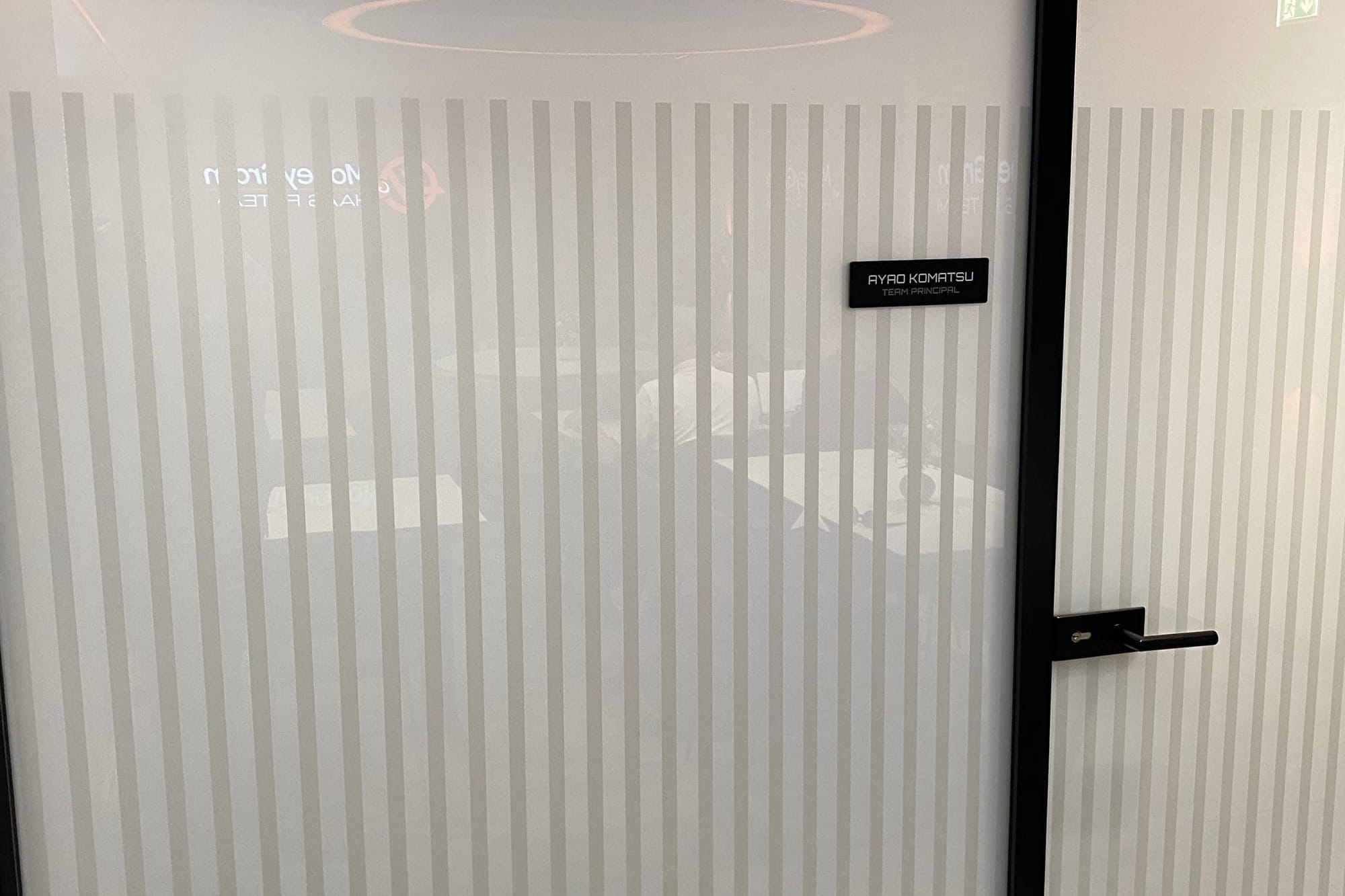
There could also be a third tier in the future, perhaps a rooftop terrace similar to that of next-door neighbour Aston Martin. Currently, that's an option rather than a firm plan, but is evidence of the desire to future-proof the construction to allow for expansion down the line if needed.
However, a huge amount must happen between the decision to start a project like this and the team moving in. That's where director of procurement Matt Croft comes in.
"Going back to 2023, there was talk about a motorhome, but it really started in anger in January of last year when we got approval to start the planning phase of the project," Croft tells The Race.
"We sat down with the race team leader to understand what the operational requirements of the motorhome would be, and marketing leadership to identify what the hospitality and guest experience needed to be. So we captured the required spec.
"Parallel to that, we did some market research to see who's out there and narrowed it down to three potential suppliers. We went out with an initial request for a proposal and used that to refine our requirements, gathered that together and went with a formal tender document to the three suppliers.
"The evaluation was partly commercial but also it was the solution: how much space it would give us, would it meet the needs of the team? We also tried to evaluate the track history of the potential suppliers because our timescales were tight. We knew this week was the launch event."
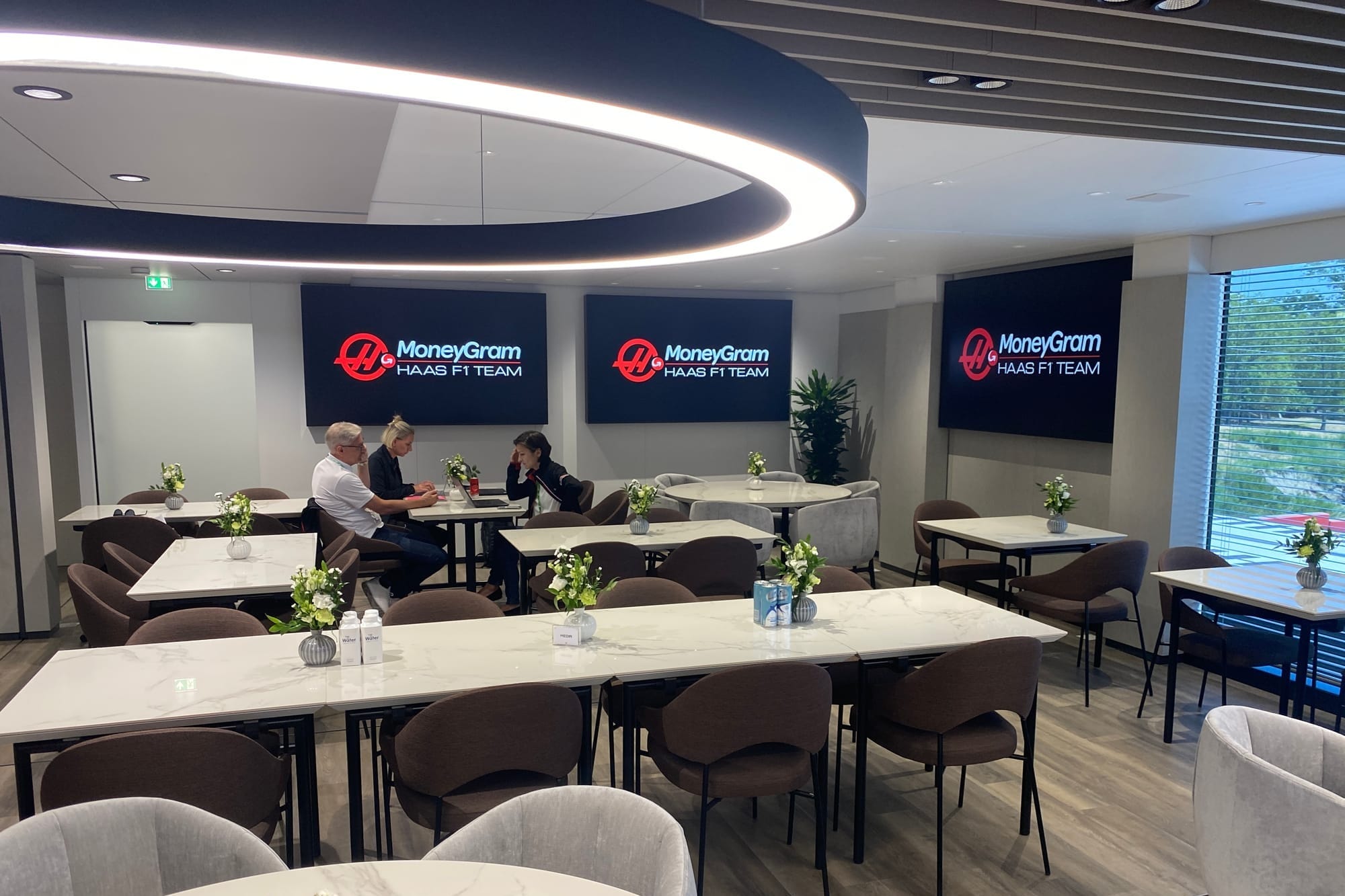
Even once that was agreed, with a basic floorplan in place and German company Schuler engaged, there was a huge amount of work still to be done not only to finalise the design but also oversee the bewildering array of details that must be taken care of.
That fell to indirect procurement manager Samantha O'Gorman, a role that involved co-ordinating the requirements of every part of Haas from management (including Gene Haas himself) to race team to catering and hospitality staff and marketing and communications.
"It went to me to project manage, to pull the stakeholders together to go through the detail and also focus on the relationship with the supplier," O'Gorman tells The Race.
"That was key, getting them on board with our vision and achieving it in a short period of time. There was a lot of pulling the strings, getting everybody together and brainstorming the requirements.
"It wasn't just about the spend, it was about the duration of the unit. We needed to make it timeless, we needed something that's going to be adaptable for the future.
"Then we needed to make sure that this investment is a morale boost for the team, we wanted to give them an experience where they can remove themselves from the hustle and bustle of the garage, dine and take a well-earned break and not feel that they need to remove themselves because we have guests coming in. We structured it with the two-floor element, so the guests are separated from the team.
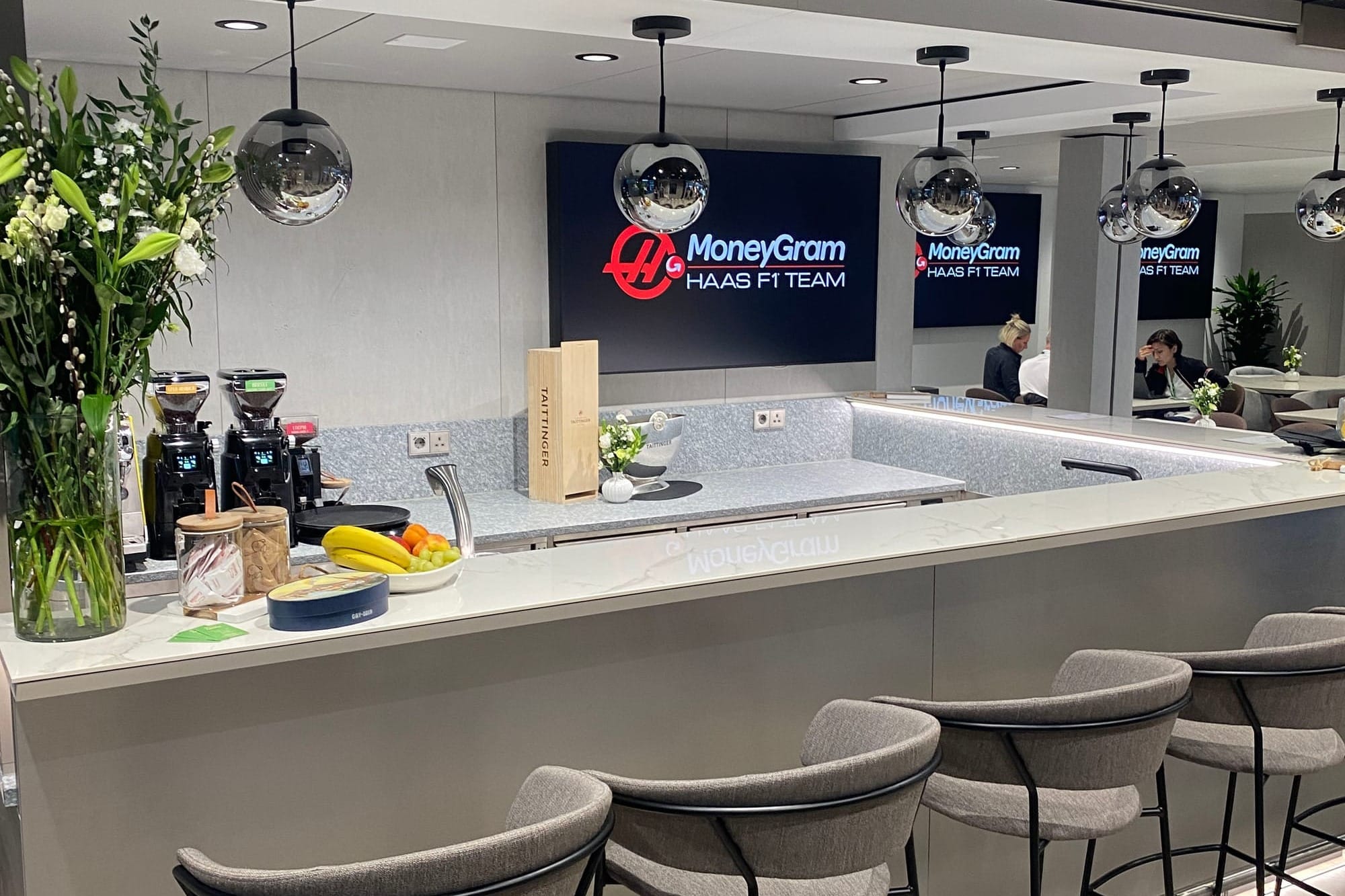
"But also, what can we do with the environment to make sure that it's going to be suitable wherever you go in the European season? You've got some lovely sunny races, you've got some very wet ones and you want to make sure it still feels a nice place inside. I worked very closely with everybody on that, and also things like textures of materials.
"We get answers quickly within Haas because everybody's involved all the way up to the drivers and Ayao, who had a strong involvement in what this looked like.
"If you took the piece of paper that we had this on and looked at it in real life, it's absolutely spot on. So the supplier has done a fantastic job putting our vision into real life."
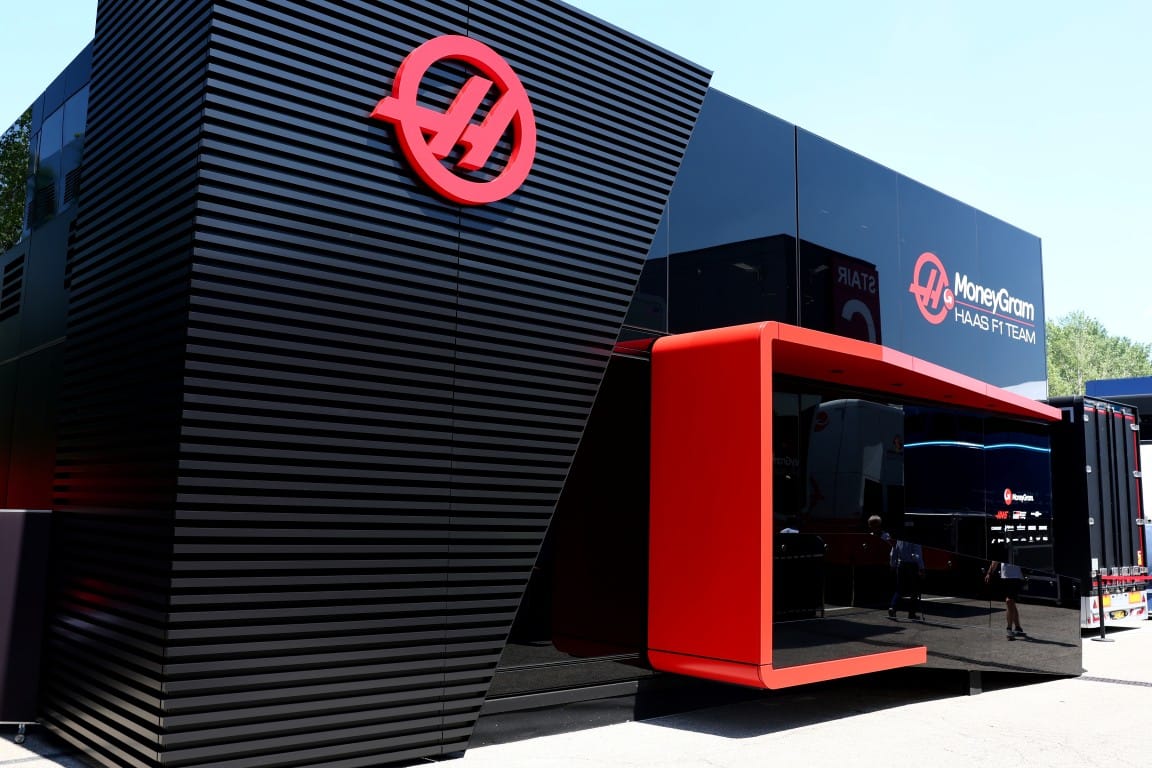
What's more, the motorhome needs not only to be portable, but also in a way that it can be dismantled and transported in double quick time. A European triple-header is the ultimate baptism of fire, especially with the trip to Monaco between Imola and Spain. That has been prepared for thanks to the rigorous planning and the experience and expertise of all those involved.
"When you walk into this today, every detail is considered and it's movable," says O'Gorman. "I find that's quite amazing. If you're going to a five-star hotel, nothing moves, but we've had to consider the fact we need to move this from A to B.
"How are we going to fix the pictures to the walls? How are we going to make sure that the coffee machines can be packed down? Where are we going to put glasses and make sure they don't smash on the road? There's so much detail. We have a really good logistics team in Haas who have a lot of knowledge to make sure we have the best solution. Also, we made sure we are considering sustainability, so the trucks are run on biodiesel."
The end product certainly looks the part. The layout is intuitive and it has a familiar feel even on your first visit. As with all good design, it's about form and function, which is a theme that Morrell elaborates on. For him, it's important it retains the character and look of the team rather than succumbing to the generic trends of some sporting hospitality spaces.
"There were two key considerations," said Morrell. "One of the happy benefits of the old motorhome was that it was a very open space, so there was a family friendly atmosphere. Drivers can't avoid interacting with the guests all weekend like they can in other teams. Ayao for instance, as team principal had to walk through the entire room to go up the stairs and that fostered a very collective atmosphere, which we wanted to maintain.
"If you look at the design and the decor, we did a lot of research into what modern day corporate hospitality looks like. If you look at the best new stadiums across the United States, across Europe, everything is fairly brand neutral and is designed more as a hospitality space with a decor in mind as if you were going to a restaurant in the evening rather than the Haas brand colours in a big box.
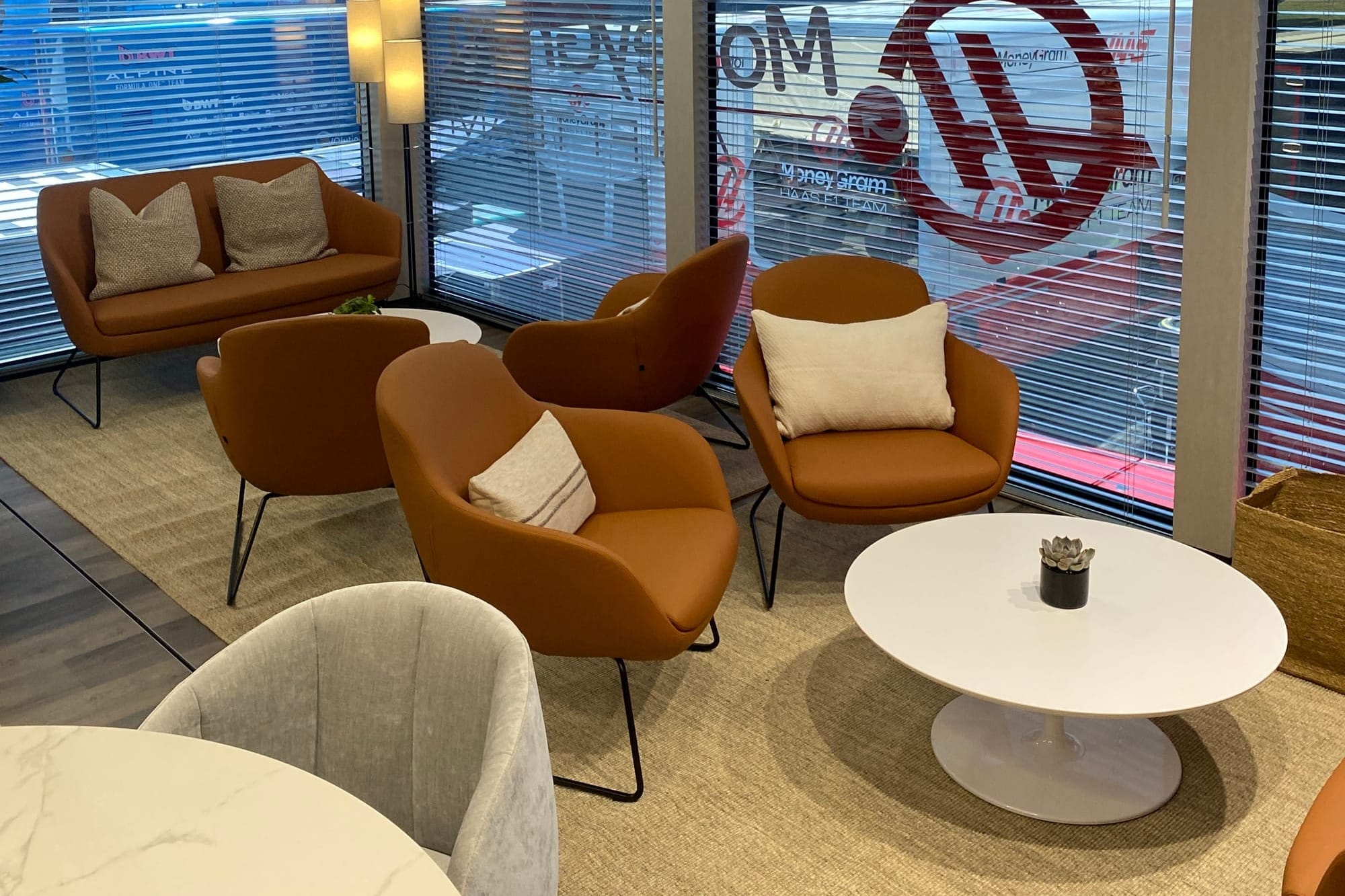
"We wanted to create an environment where people feel that they are in a luxury high-end experience, because when you have C-level sponsors who are used to those types of luxuries in life, we want to make sure that that experience is as high-end as they receive anywhere else.
"One of our key pushes is to prove to people that we can deliver what everyone else can deliver. We may not be owned by a luxury car brand, but we can still deliver the best experience possible. In fact, we pride ourselves on trying to make it more personal. That was born out of our last motorhome."
There's no specified lifespan for the motorhome. One thing Haas is resolved to do is to take good care of it, another of the unseen tasks of an F1 team, so it serves it well for years to come.
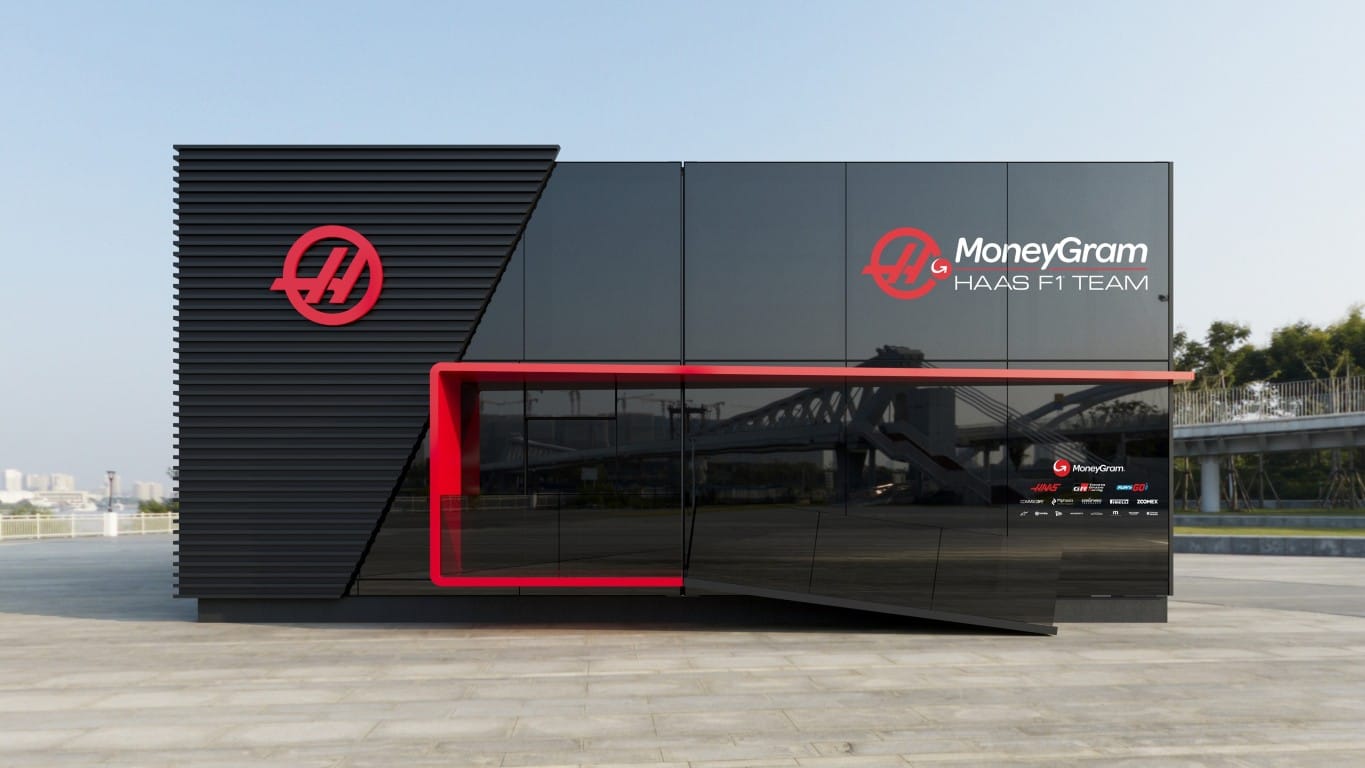
"Even though the old motorhome was fairly small, one thing we prided ourselves on is it was meticulously maintained," says Croft. "With this hospitality unit, once the European season is finished it goes into a winter storage, which is a fully indoor facility protected from the elements. It undergoes a full set of maintenance and upgrade, so at the start of every season, it should be arriving pretty much in the condition that it is now.
"We are trying to future-proof it that way by making sure we're investing in its care, its service, its maintenance, its upkeep. I don't think we've got a declared end point on it, but the goal will be to keep it."
For sceptics who might question the value of spending on a motorhome like this, which will run into many millions of dollars (Haas justifiably will not comment on the cost), just listen to Komatsu. He is, after all, an F1 engineer and can see how essential this is to all aspects of the team - and what it says about Haas F1.
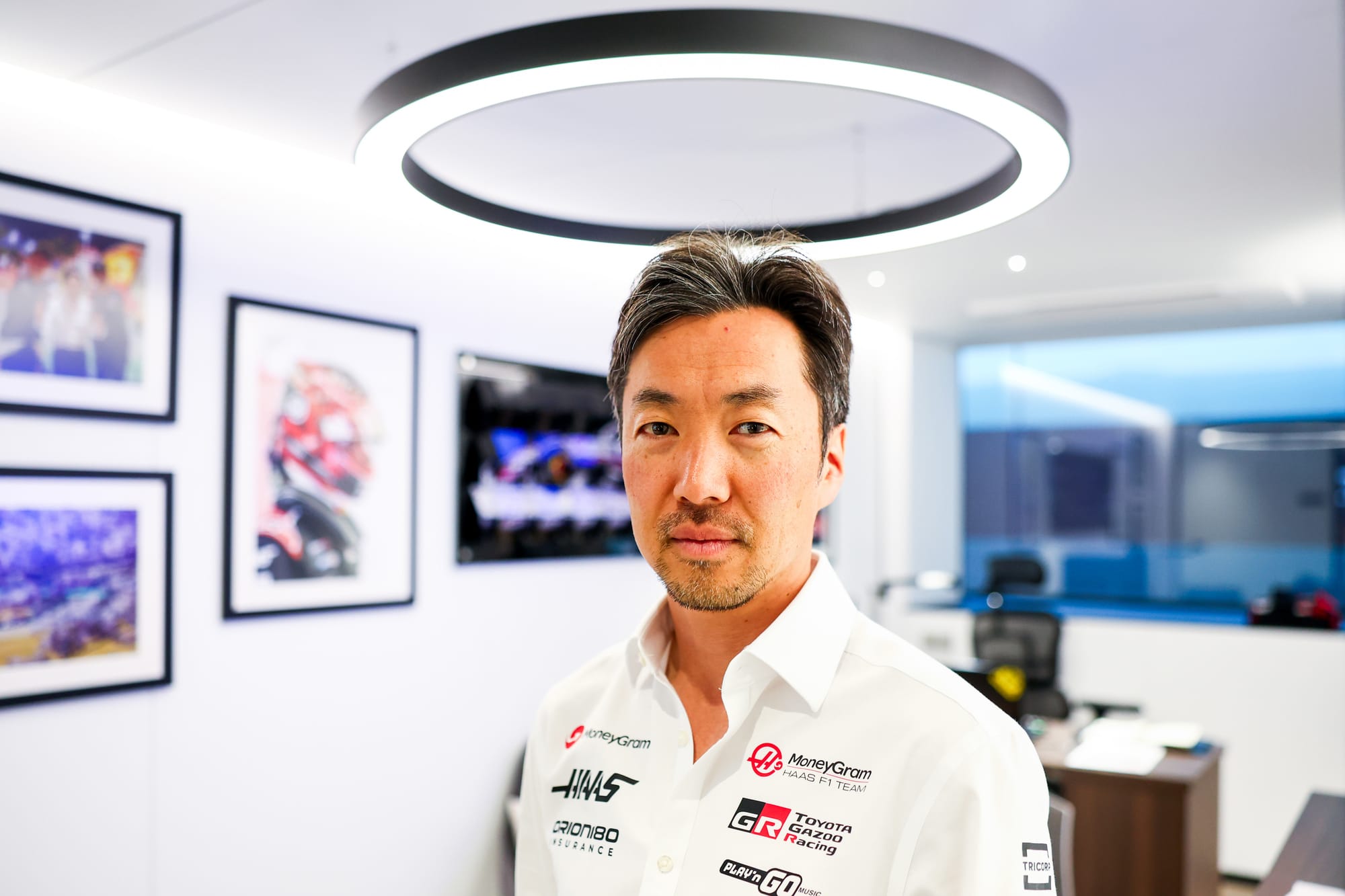
"It's big not just in practical terms, but in terms of the message you're sending to people internally as well as externally," says Komatsu. "For instance, in our previous motorhome, if we had some major sponsorship event we had to say to our guys, who work really hard: 'Can you not come to the motorhome?'
"So they have to snack in the garage, not even able to sit down properly. That's not a nice way to look after your staff, who work so hard.
"Competition on the track is tough, but to get sponsorship that competition, staff, attraction and retention is tough as well.
"So for me, both internally and externally, this is significant."


